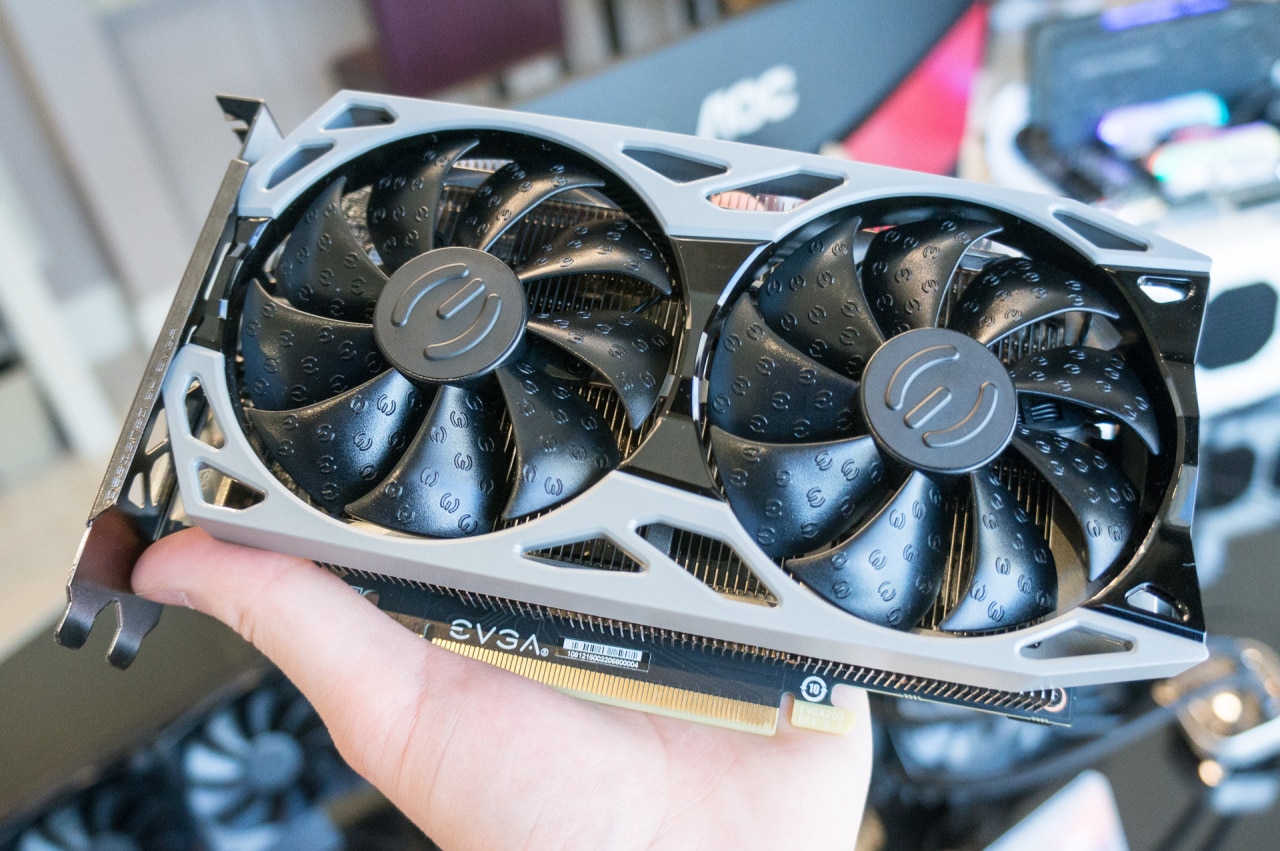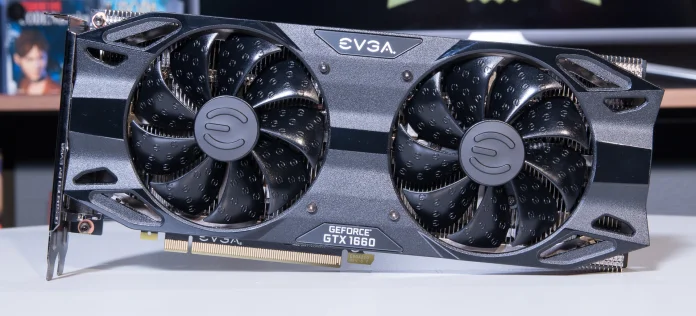It is blowing up to a storm among the graphics cards in the middle segment, which will soon be joined by AMD’s Radeon RX 5600 XT. At the unveiling at CES 2020, it was clear that the red team is shooting sharply at Nvidia’s mid-range, through similar promises of better performance than the Geforce GTX 1660 Ti and GTX 1660 Super.
Nvidia has since contracted this with a price reduction of the Geforce RTX 2060 and according to information, AMD responds with increased Radeon RX 5600 XT performance through a new BIOS before the launch. The silent price reduction from Nvidia was presented last week, but already during the CES fair, EVGA showed the Geforce RTX 2060 KO with a pressed price as a parade number.
Now the latter graphics card has come under scrutiny at Techpowerup and when the technology site lifts the radiator, it is clear that the graphics circuit is clearly larger than with previous Geforce RTX 2060 cards. In normal cases, the RTX 2060 is gifted with the circuit TU106, but the KO model instead has TU104, which can be seen in the more potent siblings RTX 2070 Super, RTX 2080 and RTX 2080 Super.
In terms of circuit area, the TU106 measures in at 445 mm², while 545 mm² applies to the TU104. In the case of the Geforce RTX 2060 KO, a substantial proportion of the TU104 is thus locked to match the specifications of the mid-range card, which comes with 1,920 CUDA cores, 120 texture units, 48 raster units and 30 RT cores.
In terms of clock frequencies, EVGA’s price – pressed Geforce RTX 2060 is completely in line with the reference model, with base and turbo levels of 1,365 and 1,680 MHz, respectively. Despite this, Techpowerup’s combined performance index shows that the KO model performs 3–4 percent better than Nvidia’s reference card, at the expense of slightly higher energy consumption under load.
It is worth emphasizing that 1,680 MHz is a nominal turbo level and Techpowerup explains the EVGA card’s advantage with its average turbo frequency 1,890 MHz, while the reference card averages 1,865 MHz. However, the higher power consumption means that the Geforce RTX 2060 KO offers about 5 percent lower energy efficiency compared to Nvidia’s own card.
With circuit boards and coolers taken from lower price ranges, EVGA can carve out parts of the price tag.
In conclusion, it can be added that the dismantling of the graphics card provides answers to the questions from CES 2020, about how EVGA managed to cut the price. The answer is spelled Geforce GTX 1600 family, where both circuit boards and cooling solution are variants of the cheaper series. Apart from the noise level under load, this should not have any noticeable negative effect.
It is not yet known when EVGA’s price – pressed Geforce RTX 2060 will appear in Swedish stores, but a price of 299 USD corresponds to around SEK 3,550 including VAT. In Nvidia’s online store, just SEK 3,550 is the new price for the Founders Edition card. It remains to be seen when other manufacturers will follow.
















